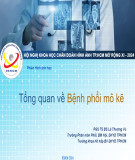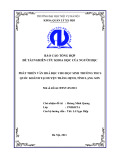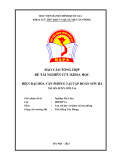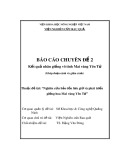
Open Access
Available online http://ccforum.com/content/10/5/R143
Page 1 of 9
(page number not for citation purposes)
Vol 10 No 5
Research
Intensive care unit-acquired Stenotrophomonas maltophilia:
incidence, risk factors, and outcome
Saad Nseir1,2, Christophe Di Pompeo2, Hélène Brisson1, Florent Dewavrin1, Stéphanie Tissier1,
Maimouna Diarra1, Marie Boulo1 and Alain Durocher1,2
1Intensive Care Unit, Calmette Hospital, University Hospital of Lille, boulevard du Pr Leclercq, 59037 Lille cedex, France
2Medical Assessment Laboratory, Lille II University, 1 place de Verdun, 59045 Lille, France
Corresponding author: Saad Nseir, s-nseir@chru-lille.fr
Received: 20 Jul 2006 Revisions requested: 11 Aug 2006 Revisions received: 5 Sep 2006 Accepted: 6 Oct 2006 Published: 6 Oct 2006
Critical Care 2006, 10:R143 (doi:10.1186/cc5063)
This article is online at: http://ccforum.com/content/10/5/R143
© 2006 Nseir et al.; licensee BioMed Central Ltd.
This is an open access article distributed under the terms of the Creative Commons Attribution License (http://creativecommons.org/licenses/by/2.0),
which permits unrestricted use, distribution, and reproduction in any medium, provided the original work is properly cited.
Abstract
Introduction The aim of this study was to determine incidence,
risk factors, and impact on outcome of intensive care unit (ICU)-
acquired Stenotrophomonas maltophilia.
Methods This prospective observational case-control study,
which was a part of a cohort study, was conducted in a 30-bed
ICU during a three year period. All immunocompetent patients
hospitalised >48 hours were eligible. Patients with non-
fermenting Gram-negative bacilli (NF-GNB) at ICU admission
were excluded. Patients without ICU-acquired S. maltophilia
who developed an ICU-acquired NF-GNB other than S.
maltophilia were also excluded. Screening (tracheal aspirate
and skin, anal, and nasal swabs) for NF-GNB was performed in
all patients at ICU admission and weekly. Univariate and
multivariate analyses were performed to determine risk factors
for ICU-acquired S. maltophilia and for ICU mortality.
Results Thirty-eight (2%) patients developed an S. maltophilia
ICU-acquired colonisation and/or infection and were all
successfully matched with 76 controls. Chronic obstructive
pulmonary disease (COPD) and duration of antibiotic treatment
(odds ratio [OR] [95% confidence interval (CI)] = 9.4 [3 to 29],
p < 0.001, and 1.4 [1 to 2.3], p = 0.001, respectively) were
independently associated with ICU-acquired S. maltophilia.
Mortality rate (60% versus 40%, OR [95% CI] = 1.3 [1 to 1.7,
p = 0.037]), duration of mechanical ventilation (23 ± 16 versus
7 ± 11 days, p < 0.001), and duration of ICU stay (29 ± 21
versus 15 ± 17 days, p < 0.001) were significantly higher in
cases than in controls. In addition, ICU-acquired infection
related to S. maltophilia was independently associated with ICU
mortality (OR [95% CI] = 2.8 [1 to 7.7], p = 0.044).
Conclusion COPD and duration of antibiotic treatment are
independent risk factors for ICU-acquired S. maltophilia. ICU-
acquired S. maltophilia is associated with increased morbidity
and mortality rates. ICU-acquired infection related to S.
maltophilia is an independent risk factor for ICU mortality.
Introduction
Non-fermenting Gram-negative bacilli (NF-GNB) colonisation
and infection are frequent among critically ill patients [1-3].
Antibiotic resistance is common in NF-GNB, resulting in inap-
propriate initial antibiotic treatment and poor outcomes [4-6].
Several studies have investigated incidence, risk factors, and
outcome of patients with Pseudomonas aeruginosa and Aci-
netobacter baumannii colonisation and infection. However,
few studies have investigated patients with colonisation and/
or infection related to Stenotrophomonas maltophilia.
Isolation rates of S. maltophilia have been increasing since the
early 1970s, according to reports from several centres [7].
This pathogen primarily affects patients with co-morbid illness
such as cystic fibrosis, immunosuppression, organ transplan-
tation, and malignancies [8]. Infections related to S. mal-
tophilia are associated with high morbidity and mortality rates.
Therapy for these infections represents a significant challenge
both for the clinician and the microbiologist because of this
organism's high level of antibiotic resistance to most of the
currently used agents and methodological difficulties in sus-
ceptibility testing with this organism [9,10].
CI = confidence interval; COPD = chronic obstructive pulmonary disease; ICU = intensive care unit; MDR = multi-drug-resistant; NF-GNB = non-
fermenting Gram-negative bacilli; OR = odds ratio; SAPS = Simplified Acute Physiology Score; VAP = ventilator-associated pneumonia.

Critical Care Vol 10 No 5 Nseir et al.
Page 2 of 9
(page number not for citation purposes)
In recent years, several trials have elucidated risk factors for S.
maltophilia infection, which include neutropenia, presence of
a central venous catheter, prolonged hospitalisation, and pre-
vious antibiotic treatment with broad-spectrum antibiotics [11-
16]. However, only one study was performed in intensive care
unit (ICU) patients with ventilator-associated pneumonia
(VAP) related to S. maltophilia [16]. In addition, no study has
evaluated risk factors for and impact on outcome of ICU-
acquired S. maltophilia. Identifying risk factors for S. mal-
tophilia colonisation and/or infection could be useful for future
interventional studies aiming at preventing ICU-acquired S.
maltophilia. Therefore, we conducted this study to determine
incidence of, risk factors for, and outcome of ICU-acquired S.
maltophilia.
Materials and methods
This prospective case-control study, which was a part of a
cohort study, was conducted in a 30-bed medical and surgical
ICU from January 1998 to January 2001. Because the study
was observational, Institutional Review Board approval was
not required; this was in accordance with Institutional Review
Board regulation.
All patients who were without severe immunosuppression and
who were hospitalised more than 48 hours in the ICU were eli-
gible. Patients with colonisation and/or infection related to NF-
GNB at ICU admission and patients without screening for NF-
GNB colonisation at ICU admission and more than 48 hours
after ICU admission were excluded. Patients without ICU-
acquired S. maltophilia who developed an ICU-acquired colo-
nisation and/or infection related to NF-GNB other than S. mal-
tophilia were also excluded. However, patients with ICU-
acquired colonisation and/or infection related to S. maltophilia
and ICU-acquired colonisation and/or infection related to NF-
GNB other than S. maltophilia were studied as cases.
Infection control policy included continuous surveillance of
nosocomial infections, isolation techniques, and routine
screening of multi-drug-resistant (MDR) bacteria. At ICU
admission, isolation techniques were used in all patients until
receipt of screening results. Thereafter, these techniques
were performed in all patients with colonisation or infection
related to MDR bacteria. Isolation techniques included use of
protective gowns and gloves and adequate hand-washing
with antiseptic soap between patient contacts. No selective
digestive decontamination was performed. Antibiotic treat-
ment was based on local antibiotic guidelines, including spe-
cific recommendations for each type of infection.
Routine screening of NF-GNB was performed in all patients at
ICU admission and on a weekly basis (every Monday) thereaf-
ter. This screening included nasal, anal, and axilla swabs. In
addition, tracheal aspirate was performed in intubated or tra-
cheotomised patients. Hemocultures, quantitative tracheal
aspirates, broncho-alveolar lavage, urine cultures, and other
microbiologic cultures were performed according to clinical
status.
Infection and colonisation were considered to be ICU-
acquired if they were diagnosed more than 48 hours after ICU
admission. VAP was defined by the presence of new or pro-
gressive radiographic infiltrate associated with two of the fol-
lowing criteria: temperature above 38.5°C or below 36.5°C,
leucocyte count above 10,000/μl or below 1,500/μl, purulent
tracheal aspirate, and positive (≥106 colony-forming units per
ml) tracheal aspirate. Ventilator-associated tracheobronchitis
was defined using all of the following criteria: fever (>38°C)
with no other recognisable cause, new or increased sputum
production, positive (≥106 colony-forming units per ml)
endotracheal aspirate culture yielding a new bacteria, and no
radiographic evidence of new pneumonia [17]. Other defini-
tions of nosocomial infections were based on criteria of the
CDC (Centers for Disease Control and Prevention) [18]. Col-
onisation was defined as a positive microbiologic culture with-
out clinical signs of infection. Prior antibiotic treatment was
defined as any antibiotic treatment during the two weeks pre-
ceding ICU admission. Severe immunosuppression was
defined by the presence of neutropenia (leucocyte count
<1,000/μl or neutrophils <500/μl), active solid or hematology
malignancy, long-term corticosteroid therapy (≥1 mg/kg per
day for >1 month), or HIV infection (CD4 <50/μl during the
previous 6 months). Cases were patients with ICU-acquired S.
maltophilia colonisation and/or infection. Controls were
patients without NF-GNB colonisation and/or infection. Antibi-
otics used during the study period included glycopeptides
(vancomycin and teicoplanin), extended-spectrum penicillins
(amoxicillin/clavulanate, ticarcillin, ticarcillin/clavulanate, piper-
acillin, piperacillin/tazobactam, and imipenem), fluoroquinolo-
nes (ofloxacin and ciprofloxacin), extended-spectrum
cephalosporins (cefotaxime, ceftriaxone, ceftazidime, and
cefepime), aminoglycosides (gentamicin, tobramycin, and ami-
kacin), and others (erythromycin, metronidazole, fusidic acid,
rifampicin, and fosfomycin). Antimicrobial therapy was
deemed inappropriate when none of the antibiotics used was
active in vitro on S. maltophilia. Outcomes evaluated included
ICU mortality, duration of mechanical ventilation, and duration
of ICU stay.
Statistical methods
SPSS software (SPSS Inc., Chicago, IL, USA) was used for
data analysis. Proportions were compared using the χ2 test or
the Fisher exact test whereas appropriate, continuous varia-
bles were compared using the Student t test or Mann-Whitney
U test. Results are presented as number (percentage) for fre-
quency and as mean ± standard deviation for quantitative var-
iables. Odds ratio (OR) [95% confidence interval (CI)] was
calculated for all significant (p < 0.05) qualitative variables in
univariate analysis and for all significant variables in multivari-
ate analysis.

Available online http://ccforum.com/content/10/5/R143
Page 3 of 9
(page number not for citation purposes)
Every case patient was matched to two control patients
according to all the following criteria: (a) duration of ICU stay
before ICU-acquired S. maltophilia occurrence (controls ≥
cases), (b) Simplified Acute Physiology Score (SAPS) II at
ICU admission ± 5 points, (c) age ± 5 years, (d) admission cat-
egory (medical/surgical), and (e) date of ICU admission when
more than two control patients were well matched to a case.
The controls chosen were the ones with the closest date of
admission to that of case patients.
Univariate and multivariate analyses were used to determine
variables associated with ICU-acquired S. maltophilia. The fol-
lowing variables were included in univariate analysis: age, gen-
der, SAPS II and organ failures on ICU admission, transfer
from other wards, admission category (medical/surgical), dia-
betes mellitus, chronic obstructive pulmonary disease
(COPD) [19], prior antibiotic treatment, central venous cathe-
ter, urinary catheter, tracheostomy, mechanical ventilation,
duration of mechanical ventilation, duration of ICU stay, antibi-
otic treatment, and duration of antibiotic treatment. Treatment
with the following antibiotics and its duration were also
included in univariate analysis: glycopeptide, extended-spec-
trum penicillin, fluoroquinolones, extended-spectrum cepha-
losporin, carbapenem, aminoglycoside, and metronidazole. In
patients with ICU-acquired S. maltophilia, only exposure to
potential risk factors before S. maltophilia acquisition was
taken into account.
To determine risk factors for ICU-acquired infection related to
S. maltophilia, cases with only colonisation and their controls
were excluded from risk factor analysis. Cases with an ICU-
acquired infection and their controls were compared using
univariate and multivariate analyses. All the above-cited varia-
bles were included in these analyses.
Univariate and multivariate analyses were performed to deter-
mine risk factors for ICU mortality among cases and controls.
All the above-cited variables were included in univariate analy-
sis. In addition, ICU-acquired S. maltophilia and ICU-acquired
infection related to S. maltophilia were included in risk factor
analyses of ICU mortality. Variables with p < 0.2 by univariate
analysis were included in stepwise logistic regression models.
Prior antibiotic use as well as antibiotic treatment in the ICU
and its duration were compared between patients with COPD
and patients without COPD.
Results
Patient characteristics
One thousand eight hundred and eighty-five patients were eli-
gible, 25 (1%) patients were excluded for NF-GNB colonisa-
tion and/or infection at ICU admission, and 20 (1%) patients
for absence of NF-GNB screening at ICU admission and more
than 48 hours after ICU admission. Among the 1,840 remain-
ing patients, 324 (17%) patients developed an ICU-acquired
NF-GNB. Two hundred and eighty-six (15%) patients without
ICU-acquired S. maltophilia were excluded for ICU-acquired
colonisation and/or infection related to NF-GNB other than S.
maltophilia. Thirty-eight (2%) patients developed an ICU-
acquired colonisation and/or infection related to S. mal-
tophilia, representing two patients with ICU-acquired S. mal-
tophilia per 1,000 ICU days. These patients were all
successfully matched with 76 control patients (Figure 1).
Among cases, three patients had an ICU-acquired colonisa-
tion and/or infection related to NF-GNB other than
Figure 1
Profile of the study in this reportProfile of the study in this report. ICU, intensive care unit; NF-GNB, non-fermenting Gram-negative bacilli

Critical Care Vol 10 No 5 Nseir et al.
Page 4 of 9
(page number not for citation purposes)
S. maltophilia. Among cases with ICU-acquired infection
related to S. maltophilia, 24 (80%) patients had prior coloni-
sation related to S. maltophilia.
The mean time between ICU admission and first ICU-acquired
S. maltophilia was 14 ± 11 days. Thirty of 38 (78%) patients
developed 36 ICU-acquired infections related to S. mal-
tophilia, including 22 VAP, eight ventilator-associated trache-
obronchitis, four urinary infections, and two bacteremias.
Patient characteristics are presented in Table 1.
Risk factors for ICU-acquired S. maltophilia
Risk factors for ICU-acquired S. maltophilia and for ICU-
acquired infection related to S. maltophilia which were deter-
mined by univariate analysis are presented in Tables 1 and 2.
COPD (OR [95% CI] = 9.4 [3 to 29], p < 0.001) and duration
of antibiotic treatment (OR [95% CI] = 1.4 per day [1 to 2.3],
p = 0.001) were independently associated with ICU-acquired
S. maltophilia. Antecedent COPD and duration of antibiotic
treatment were also independently associated with ICU-
acquired infection related to S. maltophilia (OR [95% CI] =
9.1 [2.5 to 32], p < 0.001, and 1.16 [1 to 1.2], p = 0.001,
respectively).
Rates of prior antibiotic use (21 of 41 [51%] versus 27 of 73
[36%], p = 0.101) and antibiotic use during ICU stay (32 of
41 [78%] versus 53 of 73 [72%], p = 0.342) were similar in
patients with COPD as compared with patients without
COPD, respectively. Duration of antibiotic treatment during
ICU stay was similar in patients with COPD and patients with-
out COPD (11 ± 8 days versus 8 ± 6 days, p = 0.224).
Table 1
Risk factors for ICU-acquired Stenotrophomonas maltophilia and ICU-acquired infection related to S. maltophilia by univariate
analysis
Cases (n = 38) Controls (n = 76) p value Cases with infection (n = 30) Controls (n = 60) p value
At ICU admission
Age, years 63 ± 12 65 ± 12 0.573 63 ± 13 65 ± 13 0.523
SAPS II 32 ± 15 30 ± 15 0.582 32 ± 15 31 ± 15 0.784
Male gender 24 (63) 50 (65) 0.470 10 (33) 20 (33) NA
Transfer to the ICU from a ward 31 (81) 65 (85) 0.358 25 (83) 50 (83) NA
Surgery 9 (23) 18 (23) NA 7 (23) 14 (23) NA
Diabetes mellitus 4 (10) 7 (9) 0.532 4 (13) 6 (10) 0.441
COPD 24 (63) 17 (22) <0.001a20 (66) 12 (20) <0.001b
Cystic fibrosis 3 (7) 2 (2) 0.205 3 (10) 1 (1) 0.106
Prior antibiotic treatment 19 (50) 29 (38) 0.157 15 (50) 23 (38) 0.203
Organ failure
Respiratory 38 (100) 53 (69) <0.001c30 (100) 39 (65) <0.001d
Cardiac 8 (18) 13 (17) 0.431 7 (23) 9 (15) 0.267
Renal 9 (23) 16 (21) 0.506 7 (23) 13 (21) 0.561
Neurologic 6 (25) 24 (31) 0.042e4 (13) 20 (33) 0.028f
Digestive 1 (2) 8 (10) 0.120 1 (3) 8 (13) 0.119
During ICU hospitalization
Central venous catheter 35 (92) 69 (90) 0.559 27 (90) 55 (91) 0.537
Urinary catheter 35 (92) 63 (82) 0.147 28 (93) 50 (83) 0.162
Tracheostomy 6 (15) 10 (13) 0.453 4 (13) 6 (10) 0.441
Mechanical ventilation 32 (84) 57 (75) 0.191 30 (100) 57 (95) 0.442
Duration of mechanical
ventilation, days
12 ± 10 7 ± 11 0.026 12 ± 10 8 ± 12 0.016
Duration of ICU stay, days 14 ± 11 15 ± 17 0.537 14 ± 12 14 ± 20 0.523
Data are presented as mean ± standard deviation or number (percentage). Odds ratio (95% confidence interval) = a1.9 (1.3 to 2.8), b2.2 (1.3 to
3.5), c1.7 (1.4 to 2), d1.7 (1.4 to 2.1), e2.6 (1 to 7), and f2.4 (1 to 6.2). COPD, chronic obstructive pulmonary disease; ICU, intensive care unit;
NA, not applicable; SAPS, Simplified Acute Physiology Score.

Available online http://ccforum.com/content/10/5/R143
Page 5 of 9
(page number not for citation purposes)
Outcomes of study patients
ICU mortality rate, duration of mechanical ventilation, and
duration of ICU stay were significantly higher in cases than in
controls and were significantly higher in cases with S. mal-
tophilia ICU-acquired infection than in their controls (Table 3).
Although mortality rate was significantly higher in cases with S.
maltophilia ICU-acquired infection than in cases with S. mal-
tophilia ICU-acquired colonisation (21 of 30 [70%] versus 2
of 8 [25%], OR [95% CI] = 2.5 [1.2 to 4.9], p = 0.029), dura-
tion of mechanical ventilation (22 ± 18 days versus 10 ± 11
days, p = 0.104) and duration of ICU stay (29 ± 19 days ver-
sus 31 ± 30 days, p = 0.847) were similar in the two groups.
In cases with S. maltophilia ICU-acquired infection, mortality
rate was significantly higher in patients who received inappro-
priate initial antibiotic treatment than in patients who received
appropriate initial antibiotic treatment (8 of 8 [100%] versus
13 of 22 patients [59%], OR [95% CI] = 1.6 [1.1 to 2.3], p =
0.035).
Risk factors for ICU mortality
Risk factors for ICU mortality which wer determined by univar-
iate analysis are presented in Tables 4 and 5. Multivariate anal-
ysis identified cardiac failure (OR [95% CI] = 52 [5 to 496], p
= 0.001), S. maltophilia ICU-acquired infection (OR [95% CI]
= 2.8 [1 to 7.7], p = 0.044), and respiratory failure (OR [95%
CI] = 5 [1 to 25], p = 0.047) as independent risk factors for
ICU mortality.
Table 2
Antibiotic use in study patients during intensive care unit stay
Cases (n = 38) Controls (n = 76) p value Cases with infection (n = 30) Controls (n = 60) p value
Antibiotic treatment 38 (100) 47 (61) <0.001a30 (100) 36 (60) <0.001b
Duration of antibiotic treatment, days 13 ± 10 5 ± 6 <0.001 16 ± 11 5 ± 6 <0.001
Glycopeptide use 7 (18) 12 (15) 0.457 6 (20) 10 (16) 0.453
Duration, days 1 ± 4 1 ± 2 0.582 2 ± 4 1 ± 2 0.581
Extended-spectrum penicillin use 32 (84) 38 (50) <0.001c25 (83) 28 (46) 0.001d
Duration, days 10 ± 9 4 ± 6 <0.001 11 ± 10 4 ± 6 0.001
Fluoroquinolone use 17 (44) 24 (31) 0.121 12 (40) 17 (28) 0.190
Duration, days 4 ± 6 2 ± 3 0.050 4 ± 6 2 ± 4 0.124
Extended-spectrum cephalosporin use 12 (31) 6 (7) 0.002e9 (30) 5 (83) 0.010f
Duration, days 3 ± 6 0.3 ± 1 0.001 4 ± 7 0.3 ± 1 0.004
Carbapenem use 6 (15) 4 (5) 0.067 4 (13) 4 (6) 0.251
Duration, days 4 ± 3 2 ± 1 0.058 1 ± 2 0.4 ± 2 0.294
Aminoglycoside use 11 (28) 14 (18) 0.149 10 (33) 11 (18) 0.095
Duration, days 2 ± 5 1 ± 3 0.154 3 ± 6 1 ± 3 0.080
Metronidazole use 3 (7) 4 (5) 0.429 1 (3) 4 (6) 0.457
Duration, days 0.5 ± 2 0.3 ± 2 0.573 0.3 ± 2 0.4 ± 2 0.532
Results by univariate analysis. Data are presented as mean ± standard deviation or number (percentage). Odds ratio (95% confidence interval) =
a1.8 (1.4 to 2.1), b1.8 (1.4 to 2.2), c1.5 (1.2 to 2), d5.7 (1.9 to 16.9), e2.1 (1.1 to 4.2), and f4.7 (1.4 to 15.7).
Table 3
Outcomes of study patients
Cases (n = 38) Controls (n = 76) p value Cases with infection (n = 30) Controls (n = 60) p value
Duration of mechanical ventilation, days 23 ± 16 7 ± 11 <0.001 26 ± 17 8 ± 12 <0.001
Duration of ICU stay, days 29 ± 21 15 ± 17 <0.001 29 ± 19 14 ± 20 <0.001
ICU mortality 23 (60) 31 (40) 0.037a21 (70) 23 (38) 0.004b
Results by univariate analysis. Data are presented as mean ± standard deviation or number (percentage). Odds ratio (95% confidence interval) =
a1.3 (1 to 1.7) and b3.7 (1.4 to 9.5). ICU, intensive care unit.

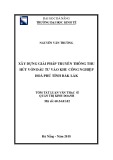


![PET/CT trong ung thư phổi: Báo cáo [Năm]](https://cdn.tailieu.vn/images/document/thumbnail/2024/20240705/sanhobien01/135x160/8121720150427.jpg)
